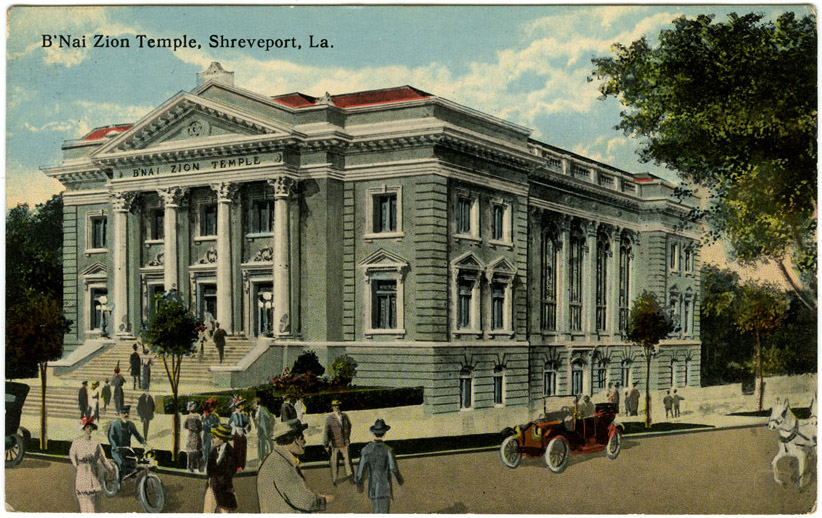7.3 Shreveport, Louisiana
B’nai Zion Temple (originally Hebrew Zion), 802 Cotton Street, corner of Cotton and Common streets
Edward F. Neild and Clarence Olschner, architects, 1915
C. T. Photochrome, publisher; no date
This postcard shows Shreveport’s B’nai Zion Temple (Sons of Zion) soon after its construction: an impressive work of public architecture set on a busy urban corner, on the edge of a park-like setting. Designed by local architects Edward F. Neild and Clarence Olschner, the Reform temple B’nai Zion was built starting in 1914 and dedicated on October 22, 1915. The congregation had outgrown its synagogue on Fannin Street, built in 1869. It had 150 members by 1910, as Shreveport’s Jewish population reached its peak in 1915 at 2,500.
The Cotton Street temple of B’nai Zion is typical of the increasingly public nature of synagogue architecture in the early 20th century. The trend was especially true for Reform synagogue architecture, which favored the classical style. The location of B’nai Zion on a heavily-trafficked street and its architectural style are consistent with that of a courthouse, post office, or other public building. The universal nature of the classical style can be confirmed simply by looking down the street to the Scottish Rite Cathedral, also designed by Neild and built between 1915 and 1917; the exteriors of the two edifices are nearly identical.
Classical-style Reform temples such as this one exhibited few outward signs of Jewish identity. That this building could serve the needs of almost any type of institution was proven after the congregation relocated in 1955. At that time, B’nai Zion sold the building to the local chapter of the Knights of the Columbus, and for years thereafter, the words “B’nai Zion Temple” on the facade were covered over with “Knights of Columbus #1108.” The Star of David on the facade, however, remained untouched.
